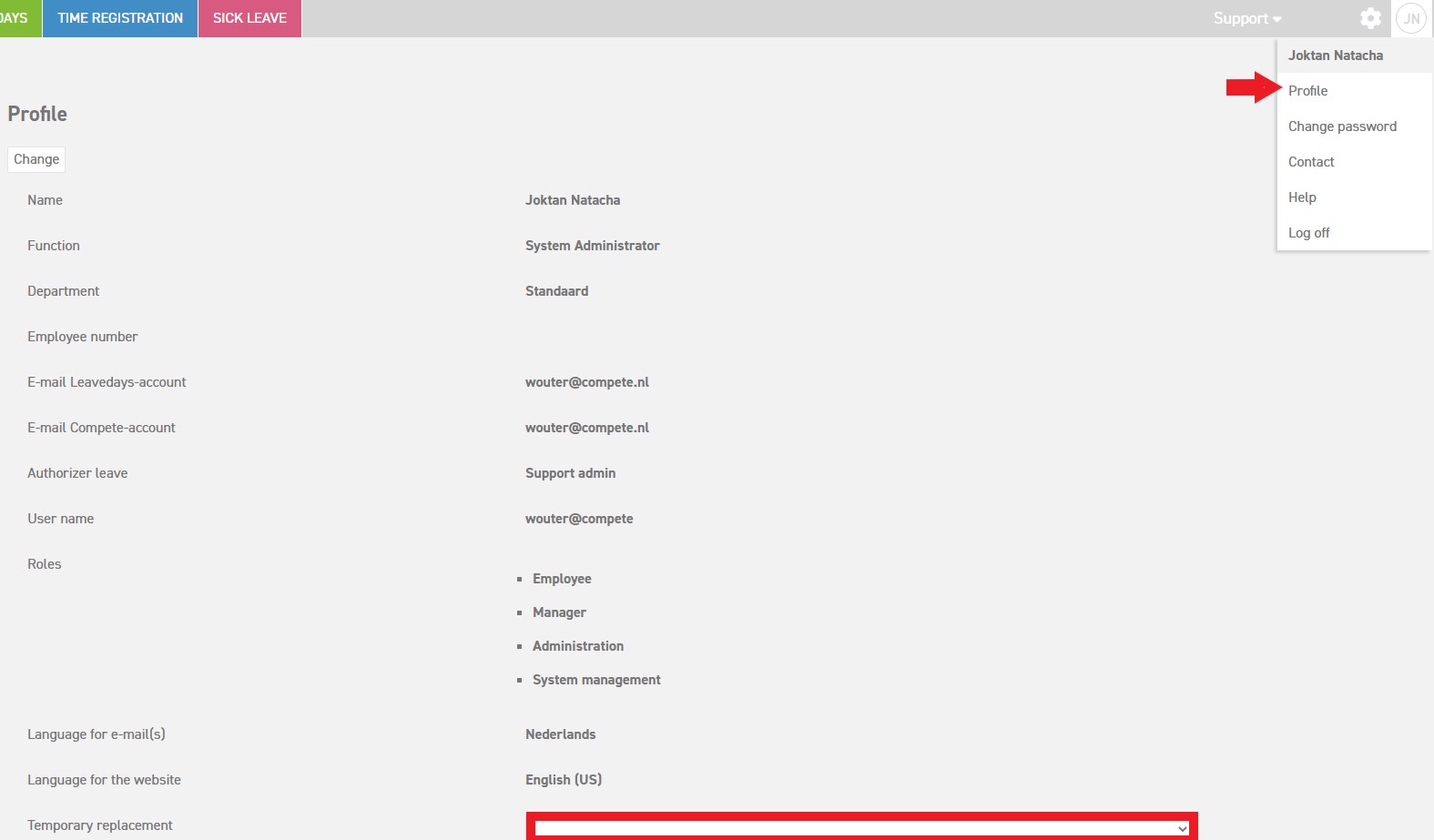Temporary Replacement [EP 3] Full: Your Ultimate Guide To Short-Term Solutions
You’ve probably heard the term “temporary replacement” thrown around in various contexts, but do you really know what it means and how it applies to your life? Whether you're looking for a quick fix at work, home, or even in your personal projects, understanding temporary replacements is crucial. In this article, we’ll dive deep into everything you need to know about temporary replacement [EP 3] full solutions, ensuring you’re equipped with the knowledge to make informed decisions.
Temporary replacement isn’t just about filling gaps; it’s about finding the right solutions that align with your immediate needs. Whether it’s a temporary employee stepping into a role, a substitute part for machinery, or even a quick fix for your daily routine, these solutions can save you time, money, and stress. Let’s break it down step by step.
So, why are we focusing on temporary replacement [EP 3] full? Well, this episode dives deeper into the nuances of short-term solutions, offering actionable insights and real-world examples. By the end of this article, you’ll be a pro at identifying, selecting, and implementing the best temporary replacements for any situation. Ready to get started? Let’s go!
Read also:Downloadhub 300mb Your Ultimate Guide To Streamline Media Downloads
What Exactly is Temporary Replacement?
Let’s start with the basics. A temporary replacement refers to any solution designed to fill a gap temporarily. This could mean hiring a temp worker, using a substitute product, or even adopting a quick fix for an urgent issue. The key here is that these solutions are meant to be short-term, bridging the gap until a permanent solution is in place.
Temporary replacement [EP 3] full is all about understanding the importance of these short-term fixes. In today’s fast-paced world, businesses and individuals alike often find themselves in situations where immediate action is necessary. Knowing how to navigate these scenarios can make all the difference.
But why is it so important? Well, think about it: if your car breaks down, you don’t just leave it on the side of the road. You find a temporary solution, like a rental car or public transport, until you can get your vehicle fixed. The same logic applies to virtually every aspect of life.
Why Temporary Replacement Matters
Temporary replacement isn’t just about convenience; it’s about efficiency. When you’re faced with an unexpected issue, whether it’s a sudden absence in the workplace or a malfunctioning piece of equipment, having a solid temporary replacement strategy can keep things running smoothly.
For businesses, temporary replacements can mean the difference between maintaining productivity and facing costly downtime. For individuals, it can mean avoiding unnecessary stress and chaos in daily life. The key is to have a plan in place and to know where to turn when the need arises.
Here’s a quick breakdown of why temporary replacement matters:
Read also:Tiger Screaming At Monkey The Untold Story Behind The Roar
- It ensures continuity in operations.
- It minimizes disruptions and downtime.
- It provides a cost-effective solution for short-term needs.
- It allows for flexibility and adaptability in various situations.
Types of Temporary Replacement Solutions
Not all temporary replacements are created equal. Depending on the situation, you might need a different type of solution. Let’s explore some of the most common types of temporary replacements:
1. Temporary Staffing
One of the most common forms of temporary replacement is staffing. Whether it’s filling in for an employee on leave or covering a sudden absence, temporary workers can be a lifesaver. Companies often rely on staffing agencies to find qualified candidates quickly.
2. Substitute Products
Sometimes, you just need a quick fix for a product or part. Substitute products can be used in manufacturing, construction, and even everyday household repairs. The key is to ensure the substitute meets the necessary standards and specifications.
3. Temporary Equipment Rentals
For businesses that require heavy machinery or specialized equipment, renting temporary solutions can be more cost-effective than purchasing outright. This is especially true for short-term projects or unexpected breakdowns.
How to Choose the Right Temporary Replacement
Selecting the right temporary replacement can be a daunting task, but it doesn’t have to be. Here are some tips to help you make the best decision:
First, assess your needs. What exactly are you trying to replace? Is it a person, a product, or a piece of equipment? Once you’ve identified the gap, you can start looking for solutions that fit your specific requirements.
Next, consider the duration. How long will the temporary replacement need to be in place? This will help you determine whether a short-term fix or a more comprehensive solution is necessary.
Finally, evaluate the cost. While temporary replacements are often more affordable than permanent solutions, it’s still important to weigh the financial implications. Look for options that offer value for money without compromising quality.
Benefits of Temporary Replacement
There are numerous benefits to using temporary replacement solutions. Let’s take a closer look at some of the most significant advantages:
- Cost-Effective: Temporary replacements are often more affordable than permanent solutions, making them ideal for short-term needs.
- Flexibility: They provide the flexibility to adapt to changing circumstances without long-term commitments.
- Efficiency: By minimizing downtime, temporary replacements help maintain productivity and efficiency.
- Testing Ground: They offer a chance to test out potential solutions before committing to a permanent change.
Challenges and Considerations
While temporary replacement solutions can be incredibly useful, they do come with their own set of challenges. One of the biggest concerns is ensuring that the temporary solution meets the necessary standards and quality requirements. This is especially important in industries where safety and compliance are critical.
Another consideration is the potential for dependency. If a temporary solution becomes too ingrained in your operations, it can be difficult to transition back to a permanent solution when the time comes. It’s important to have a clear plan for when and how the temporary replacement will be phased out.
Case Studies: Real-World Examples of Temporary Replacement
To better understand how temporary replacement works in practice, let’s look at a few real-world examples:
Case Study 1: Manufacturing Plant
A manufacturing plant experienced a sudden breakdown in one of its key machines. Rather than halting production entirely, they opted for a temporary equipment rental. This allowed them to continue operations while the original machine was repaired, minimizing downtime and maintaining production schedules.
Case Study 2: Healthcare Facility
A hospital faced a staffing shortage due to unexpected absences. They quickly arranged for temporary nurses and doctors to fill the gaps, ensuring that patient care was not compromised. This short-term solution allowed the hospital to maintain its high standards of care until the regular staff returned.
Expert Insights on Temporary Replacement
According to industry experts, temporary replacement is becoming increasingly important in today’s fast-paced world. With businesses and individuals facing more frequent disruptions, having a solid temporary replacement strategy is essential.
“Temporary replacements are not just about filling gaps; they’re about maintaining momentum,” says Jane Doe, a leading expert in workforce solutions. “By having a plan in place, businesses can avoid costly downtime and maintain their competitive edge.”
Tips for Implementing Temporary Replacement Solutions
Ready to implement temporary replacement solutions in your own life or business? Here are some practical tips to get you started:
- Identify potential gaps in advance and have a plan in place.
- Build relationships with trusted providers of temporary solutions.
- Regularly review and update your temporary replacement strategy.
- Communicate clearly with stakeholders about the temporary nature of the solution.
Conclusion: Your Next Steps
In conclusion, temporary replacement [EP 3] full is all about finding the right solutions to bridge gaps in your personal or professional life. Whether it’s staffing, products, or equipment, having a solid understanding of temporary replacement can help you navigate unexpected challenges with confidence.
So, what’s your next step? Start by identifying areas in your life or business where temporary replacements could be beneficial. Then, research and build relationships with trusted providers to ensure you have access to quality solutions when you need them most.
And don’t forget to share this article with your friends and colleagues! The more people understand the importance of temporary replacement, the better equipped we all are to face the challenges of modern life. Let’s keep the conversation going and continue learning together.
Table of Contents
- What Exactly is Temporary Replacement?
- Why Temporary Replacement Matters
- Types of Temporary Replacement Solutions
- How to Choose the Right Temporary Replacement
- Benefits of Temporary Replacement
- Challenges and Considerations
- Case Studies: Real-World Examples
- Expert Insights on Temporary Replacement
- Tips for Implementing Temporary Replacement Solutions
- Conclusion: Your Next Steps
Ullu Web Series: The Sensation Of Indian Digital Entertainment
Is Ari Melber Leaving MSNBC? Here's What We Know So Far
Chick Fil A Food Truck Menu: Your Ultimate Guide To Tasty Treats On Wheels

Immerse Yourself In The Heartstopping Finale Of "Temporary Replacement

Temporary Replacement synonyms 66 Words and Phrases for Temporary

Temporary replacement Leavedays Support